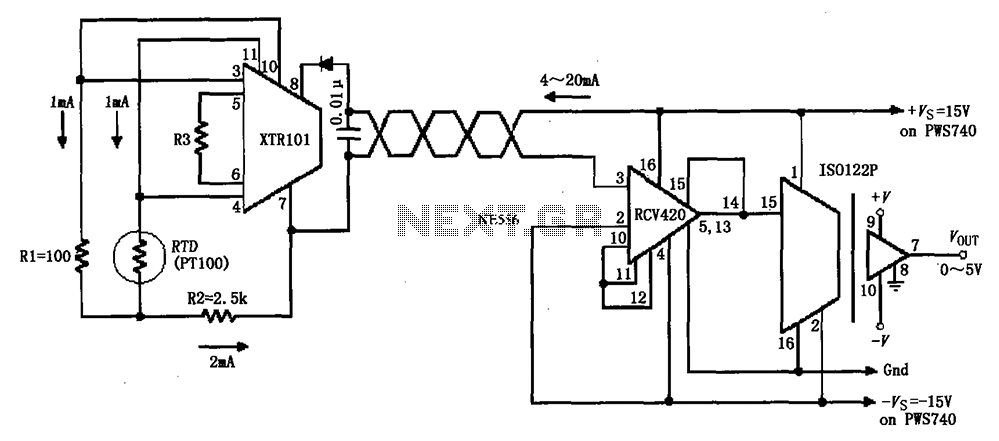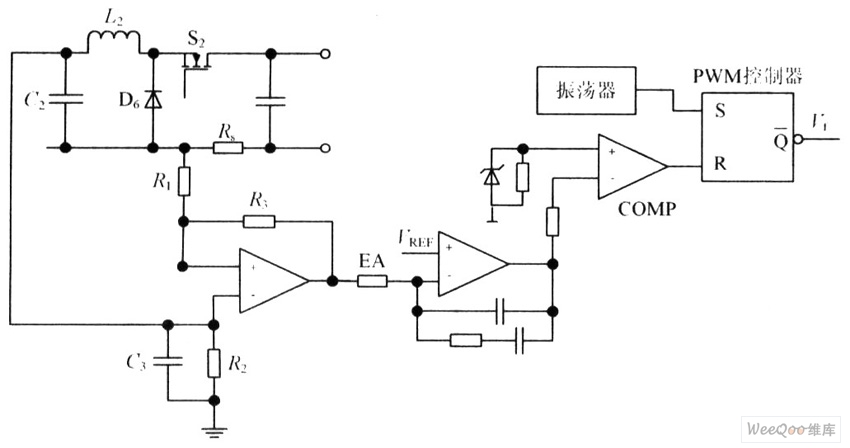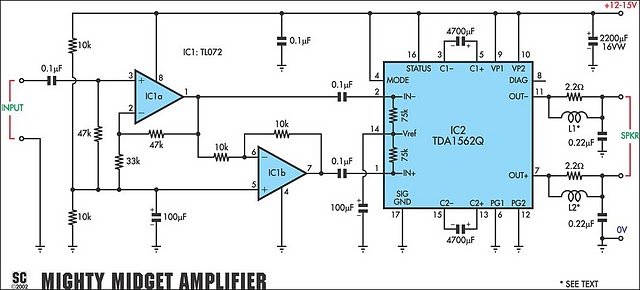
4 ~ 20mA loop detection instrumentation amplifier circuit diagram ISO122P 124 XTR101 RCV420

The circuit comprises an isolated RTD loop current configuration utilizing the XTR101 for transmitting loop current and the RCV420 for receiving it. The instrumentation amplifier detects changes in temperature via a resistance temperature detector (RTD), converting these changes into an electrical signal. The XTR101 processes this signal, generating a 4 to 20 mA current output. This current is transmitted through twisted-pair wiring to the RCV420, which then converts it back into a 4 to 20 mA current voltage signal. The output from the RCV420 is subsequently amplified by the ISO122P isolation amplifier, resulting in a final output voltage range of 0 to 5 V.
The circuit operates with a resistance temperature detector (RTD) that serves as the primary sensor for temperature measurement. The RTD's resistance varies with temperature, providing a precise method for detecting temperature changes. The XTR101 is a current transmitter designed to convert the RTD output into a standardized 4 to 20 mA signal, which is a common industrial standard for process control and instrumentation. This current output is ideal for long-distance transmission as it is less susceptible to noise and signal degradation.
The twisted-pair cable used for transmission minimizes electromagnetic interference, ensuring the integrity of the signal over longer distances. The receiving circuit, RCV420, is responsible for detecting the 4 to 20 mA signal and converting it back into a voltage signal suitable for further processing or display. The RCV420 is designed to maintain linearity and accuracy throughout its operational range.
After the RCV420 processes the signal, the ISO122P isolation amplifier provides electrical isolation between the input and output, which is crucial for protecting sensitive components from voltage spikes and ground loops. The ISO122P amplifies the signal to a 0 to 5 V output, which can be easily interfaced with various data acquisition systems or microcontrollers for monitoring and control applications.
Overall, this configuration provides a robust solution for temperature measurement and control in industrial settings, ensuring accuracy, reliability, and safety in the transmission of temperature data. As shown in FIG grounds ISO122P/124 and loop current transmitting circuit XTR101, isolated RTDs loop current configuration of the receiving circuit RCV420 4 ~ 20mA loop detecti on instrumentation amplifier. Resistance temperature detector (RTD) to detect the temperature change, the temperature change into an electrical signal input XTR101, XTR101 converted into the 4 ~ 20mA current output, through the twisted-pair transmission by RCV420 reception, and then converted into 4 ~ 20mA current voltage signal, amplified to the isolation amplifier ISO122P, after the ISO122P isolation amplifier output 0 ~ 5V voltage.
The circuit operates with a resistance temperature detector (RTD) that serves as the primary sensor for temperature measurement. The RTD's resistance varies with temperature, providing a precise method for detecting temperature changes. The XTR101 is a current transmitter designed to convert the RTD output into a standardized 4 to 20 mA signal, which is a common industrial standard for process control and instrumentation. This current output is ideal for long-distance transmission as it is less susceptible to noise and signal degradation.
The twisted-pair cable used for transmission minimizes electromagnetic interference, ensuring the integrity of the signal over longer distances. The receiving circuit, RCV420, is responsible for detecting the 4 to 20 mA signal and converting it back into a voltage signal suitable for further processing or display. The RCV420 is designed to maintain linearity and accuracy throughout its operational range.
After the RCV420 processes the signal, the ISO122P isolation amplifier provides electrical isolation between the input and output, which is crucial for protecting sensitive components from voltage spikes and ground loops. The ISO122P amplifies the signal to a 0 to 5 V output, which can be easily interfaced with various data acquisition systems or microcontrollers for monitoring and control applications.
Overall, this configuration provides a robust solution for temperature measurement and control in industrial settings, ensuring accuracy, reliability, and safety in the transmission of temperature data. As shown in FIG grounds ISO122P/124 and loop current transmitting circuit XTR101, isolated RTDs loop current configuration of the receiving circuit RCV420 4 ~ 20mA loop detecti on instrumentation amplifier. Resistance temperature detector (RTD) to detect the temperature change, the temperature change into an electrical signal input XTR101, XTR101 converted into the 4 ~ 20mA current output, through the twisted-pair transmission by RCV420 reception, and then converted into 4 ~ 20mA current voltage signal, amplified to the isolation amplifier ISO122P, after the ISO122P isolation amplifier output 0 ~ 5V voltage.





